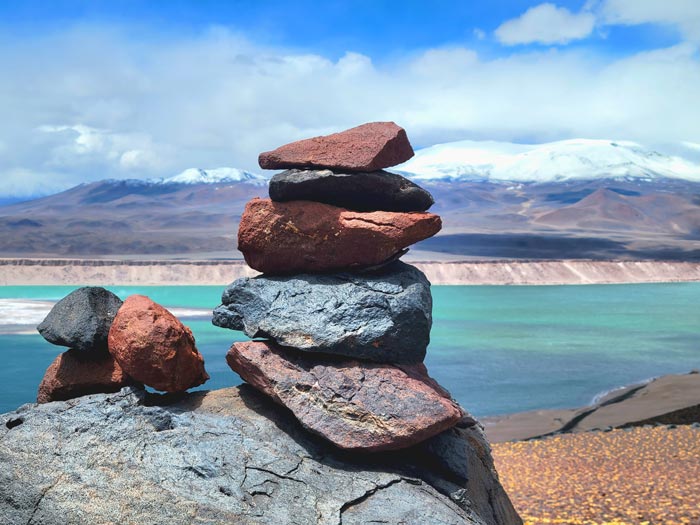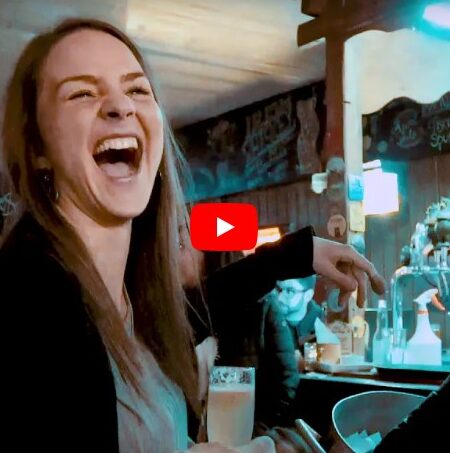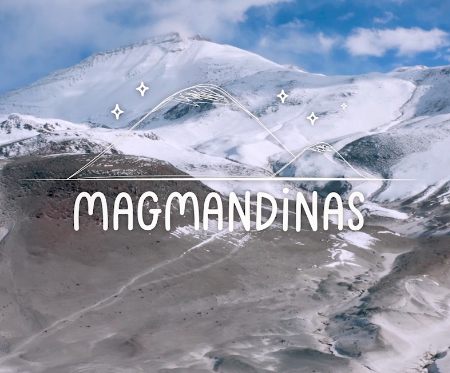There’s so much to do in San Pedro that really, your only problem will be deciding how to cram as much as possible into however many days you have. Here’s a list of the best tours to help you tour San Pedro de Atacama like a pro!!
–
My parents were visiting me in Chile and I knew that taking them to San Pedro de Atacama would be a total hit. I started talking to people about what to do, how long to be there… you know, trying to get good tips.
When I told people that I was planning on 5 days, many told me “whoa, that’s too long, a few days and you’re good.” Well, let me tell you, those people were wrong.
We had 4.5 days to tour San Pedro de Atacama, which was all I could fit into our agenda, but I would have liked a day or two more. My parents were only in Chile for 2 weeks and I had jam packed our itinerary with an exploration of both Northern and Southern Chile… but easily, I tell you, easily, you could stay weeks on end and have enough things to do.
For starters, ask yourself “tours or no tours”?
We decided to take tours for the duration of our stay in San Pedro de Atacama. However, if you speak Spanish, are in a small group, and are good about auto-educating, renting a car is also a good option. But, we wanted to tour San Pedro de Atacama the traditional way with guides, because it was much easier and meant we’d learn more about each place.
The key here is booking multiple tours through the same agency and getting a package price. Many had deals of the top 4 tours for around $100USD, which is waaaay waaaay better than booking individually. We booked all our tours through our hostel, which got us a fantastic price of 4 tours for $200USD total, for all 3 of us. 100% worth it.





How to tour San Pedro de Atacama in one week.
Day 1 – The Hidden Lakes of Baltinache
Lagunas Escondidas de Baltinache
You’ll fall in love with the many colors of the hidden lagoons of Baltinache.
Our first tour was to the hidden lakes of Baltinache, located in the Salar de Atacama / the Atacama Salt Flat. This is an afternoon tour starting around 2:00 pm, so you have all morning to be in town, shop and bum around beforehand.
The trip to the hidden lakes in this salt flat is unmissable. There are 4 truly outstanding lakes (Laguna Cejar, Ojos del Salar, Laguna Tebinquiche) with colors so intense, you’d think it’s a filter. Two of them are fully formed, so you can swim and experience what it’s like to float, like in the Dead Sea.
The two others are still forming so you can’t touch/contaminate them. How they know what is forming/formed, I am not sure. The middle two lakes (the ones that are still forming) just took my breath away, and it was surreal the difference in their colors, considering they were right next to each other. In the deeper one, it was very interesting to see the salt formation and texture under the water.
I, totally missing the boat, forgot my swimsuit. GAH! Epic fail. My dad, however, was more prepared and dove right in Laguna Cejar. It was hilarious, because he truly just hit the water and I saw him trying to dive in, but he couldn’t, instead flopping like a whale, trying to force himself under. Staying literally right on the top of the water, he waved to me and screamed “I feel like a human bobber!” Like a kid in a candy shop, it was hilarious.
At the end of this tour, they take you to the Cordillera de la Sal / The Salt Mountain Range to watch the sunset, have some snacks, and watch the sunset with a pisco sour.

”The Atacama Salt Flat is the 4th largest Salt Flat in the world. Salt flats form when there is a highly arid climate with more evaporation than precipation. In the Atacama Salt Flat, for example, there could average 26 ml / 1.5 inches a year of precipitation, but there is over 2000 ml / 122 inches a year of evaporation!
Chelsey Berg
Day 2 – Tatio Geysers & Moon Valley
Geysers del Tatio & Valle de la Luna
Morning – Geysers
You get picked up around 4:00am and head 1.5 hours up into the mountains, until you get to the geisers at an elevation of 4,000m/16,000ft. The Atacama Desert, at this hour, is very, very cold. We went at the beginning of summer and were facing temperatures around -12C / 10F.
We arrived just in time for the sunrise, stepping out of the bus and watching our breath immediately freeze, mimicking the smoking geysers filling the landscape in front of us. The Tatio Geysers are the 3rd largest geyser field in the world, with over 80 active geysers on its floorbed.
The Tatio Geysers are the 3rd biggest geyser field in the world, with over 80 active geysers.
Why do you need to go see the geysers so early, when its so DAMN cold?! Well, all around the Tatio Geysers are active volcanos, and under the earth, is hot, hot magma. So, what happens, is that the freezing temperatures of the morning contrast with the heat underground, causing the eruptions and the rising steam.
Also, there are 2 types of geysers, the flat ones that are just cracks in the ground, and then the “cone” ones that are tall cone-shaped formations. And, there are geysers that steam constantly, and others that are periodic, pulsing or exploding every certain time period. Interesting! There are your geyser facts of the day.
There are 2 types of geysers. The flat ones and then the “cone” ones like this one.
After the sun’s up and you’ve taken a million pictures, they give you a nice little breakfast. We had an amazing guide, who coincidentally used to be a porter on Aconcagua, the tallest mountain in this hemisphere, which was going to be climbing in just a few months.
After leaving the geysers, you head to an old village, which is now just used for tourism, but used to occupied by mining families. Here you can see the Machuca Church, which was built around 1933. On the straw roofs of these houses you see colorful crosses, which is because in this region, there is a lot of sulfer, which at that time was thought to attract the devil. So, these colorful crosses were supposed to help scare him away.
This tour brings you back into San Pedro around 1:00pm, so we had a couple hours of much needed nap time before heading to our next tour, Valle de la Luna / Moon Valley around 3:30pm.
Afternoon – Moon Valley
On this tour, you start by going to see and walk through huge, magnificent salt caves. Waaaay back millions of years ago, this whole region was covered in ocean. As the Andes Mountain Range started rising, it “trapped” the ocean in this area, pinning it between the Coastal Mountain Range. Well, as the millions of years passed and the ocean disappeared, these salt caves formed from the rivers that formed at one point. Literally, these caves were all salt. The formation was stunning!!
As millions of years passed and the ocean disappeared, these salt caves formed from the rivers underneath.
We could walk through many of them, sometimes having to be on our knees or ducking almost on our stomachs as we moved through. It was really crazy to think about these massive formations, the caves, the ocean that used to be….
After this, you head to see the “Three Vigilants” which I later learned that, upon the Spanish conquest, were really originally the “Three Marys”. These are different rock formations that have been created due to pressure, when the whole area used to be covered in sand dunes. The pressure caused parts to break off, and then with erosion, wind, etc, you eventually have the three indpendent fomations that, if you use your imagination, are three “Marys” (Mother Mary) that “watched over” (ie” vigilants) the area.
The three “Marys” that “watched over” the area. Known as the three vigilants, but changed to the three Marys after the Spanish conquest.
Finally, you had to Moon Valley to climb up the sand dunes and through the mountains to watch the sunset over one of the most unique landscapes on Earth, which deserves its Mars-like comparisons.
Watch the sunset over Moon Valley in the Atacama Desert. They’ll even give you a pisco sour!





Day 3 – Bikeriding
Pukará de Quitor or La Garganta del Diablo
We wanted one day to tour San Pedro de Atacama on our own so we rented bikes (6000CLP/12USD). This was a great idea, there is so much to see!! One of the options was going to “The Devils Throat” / “La garganta del diablo”, which takes maybe an hour to get to on the bike. From what I understood, you can then climb through caves for as long as your heart desires. I would like to see this at another time, because with my parents headed to Pukará de Quitor, pre-colombian archeological ruins from over 700 years ago, that are about 30 minutes bike riding from town.
It’s really fun to take a break from the tours and take a day to ride bikes to the ruins.
The ruins were also very cool, so you’d need to be a fast bike rider and ride bikes and explore all day to do them both. If not, consider multiple days.
It was nice to have a day more “leisure” without the rythym of the tours and to do things on our own schedule. We returned to San Pedro, got ice cream and sat in the main square, listening to people making music and dancing, while we ordered a pitcher of local beer and chatted and reflected on our beautiful days.

A GUIDE BY YOUR SIDE (AND IN YOUR INBOX)
My “Word Cairns” newsletter sends inspiration, tips, stories, and photos from wild corners of this world. Plus, you’ll be the first to know about new expeditions, activities, and special offers.

Day 4 – Red Rocks and the Altiplanic Lakes
Piedras Rojas y Las Lagunas Altiplanicas
In my opinion, can cannot tour San Pedro de Atacama without coming on this one!! This was hands down, so awesome. You start early in the day, around 7:00am, and get back around 5:30/6:00pm. The altiplanic lakes are the Chaxa, Miscanti, and Miñiques Lagunas. It’s about an hour and a half in the bus, until you get to the first destination, with a route constantly looking at a line of 5 volcanoes, most prominently Volcano Licancabur, Aguas Calientes and Lascar.
I couldn’t get enough of the reflection, the stillness, and the peace of the Altiplanic Lakes.
We went first to the red rocks themselves, which was this surreal oasis of a turquoise lake, next to the red rocks, and colorful, mineral rich mountains. This was called the “Salar de Aguas Calientes” / “The Salt Flat of the Hot Waters.” The color combinations were just so contrasting, the scene so serene, with a perfect reflection of the mountain on the still waters. It was hard to believe it was real, I just sat on one of the rocks and breathed and took in the moment for a bit.
Your tour agency will set up a delicious breakfast of bread, avocado, homemade jams and hot coffee. There is something that makes breakfast so much more delicious when you’re in a place like this.
After leaving this magnificent lake, we headed towards two others – the Miñiques and Miscanti Lagunas which was right under the Miñiques and Miscanti Volcanos. Miñiques in spanish means “pinky” as in your pinky finger. That is because it is the 5th in a line of beautiful, 20,000ft volcanos. These lagunas were a very deep rich blue.
Before heading to lunch, you go to the Miñiques and Miscanti Lagunas, right under towering volcanoes.
After this, around 2:00pm we headed to a small town called Socaire, which in the indigenous language means “protected from the winds.” And very protected it is, sitting in the “palm of the hand” of the 5 surrounding volcanos. Here, we stopped for a delicious lunch at a local restaurant, having a typical lunch of chicken, rice, salad and of course, bread with “pebre” (a delicious salsa).
With full bellies, we headed to the Laguna Chaxa and the Los Flamencos National Reserve, where groups of flamencos migrate to feast on the food rich water in the middle of the salt flat. We arrived at just the right time, that the reflection of the flamencos over the water was a special sight to take in.
End the day to see hundreds of flamingos feeding off the Salt Flat. If you’re lucky, you’ll see cool refections of them off the water.





Last Stop – A Little Village called Toconao
Here we were able to see a very old construction of a church and it’s separate bell tower, and also cactai over 200 years old! These cactus grow just 1cm per year, and in this area, the were multiple over 2 meters!!
As we learned about this town and its religion, they mixed the Catholic and their original indigenious practices. For example, they would have a typical Catholic funeral, but then would afterwards conduct a ceremony burning a locally growing desert plant which was said to help the spirit pass from one world into the next. Also, they would literally take the saints from inside the church and run them around the village, trying in incorporate as many people as possible into the ceremony, which always ended in a gathering with music, alcohol, dance, etc
There are various of these little towns not too far from each other, which is because, back in the time when bartering was the way of the land, people would walk with their llamas, which were carrying all their goods. However, the species of llama here in this region is one that sleeps at night time, so it was said that they needed to have the towns built close enough to travel in one day, otherwise the poor people would be stuck in the middle of the cold desert, with their llama asleep!

Keep exploring San Pedro De Atacama
Here’s some trips still on my list
With our 4 full, full days, we did as much as we possibly could, but so much remains on my list. For example:
- Rainbow Rocks / Valle de Arcoiris: beautiful multi-colored rocks about 1.5 hours from San Pedro, this is a half day trip
- Meteorite Museum: well, the name speaks for itself. This is right in town, I just didn’t find out about it till we were leaving.
- Visiting the ALMA observatory: San Pedro de Atacama is home to the most powerful telescope in the world and you can take free tours.
- Stargazing Tour: This is a night tour where they take you to observe stars, I believe also with telescopes and of course this is tourism… wine 🙂
- Hot Springs / Termas Baños de Puritama: just note, they are beautiful but more warm than hot.
- Salar de Tara y las Monjas de la Pecana: Tara salt flat with rock formations, the “Monks of the Pecan.” This is located on a crater of the Vilma Volcano, and has a more rich ecosystem. This is a full day tour.
- Valle de la Muerte / Death Valley: Visually, this is similiar to Moon Valley, and can be accessed on a bikeriding day, although it is in a different direction than the ruins I went to and also the Devils Throat “Garganta del Diablo.”
And there’s lots more, this is just my next time list. Tour San Pedro de Atacama and you’re in store for an abundant, unique, magical place with endless exploration opportunities.
Related Articles

I'M TALKIN' TO YOU
Purpose-driven people who feel compelled to make life meaningful for yourself and others.
Outdoor-inspired people whose best self comes alive when experiencing beautiful places and pushing your limits in the open air.





